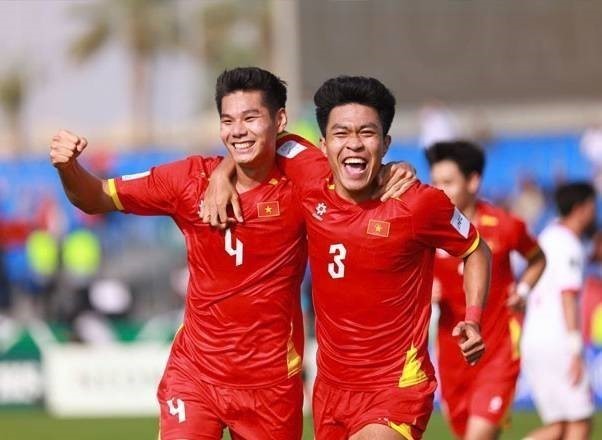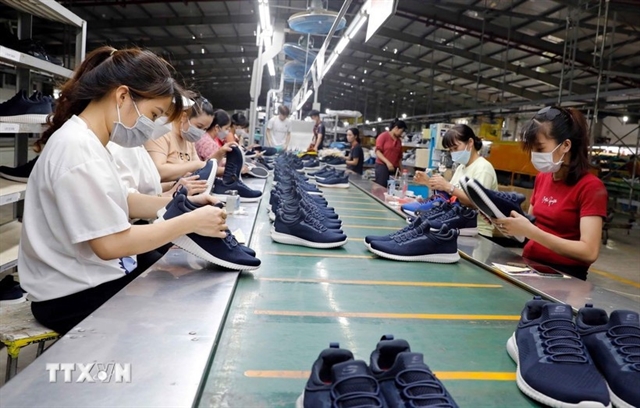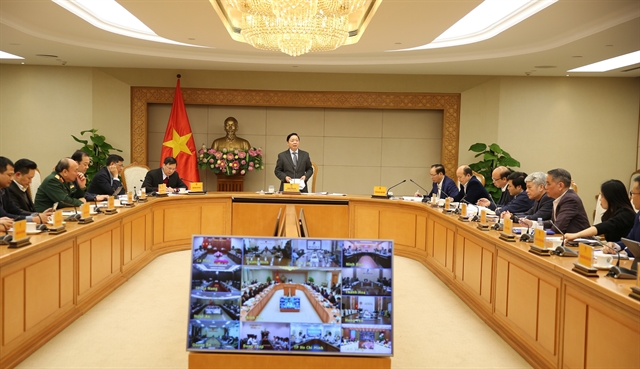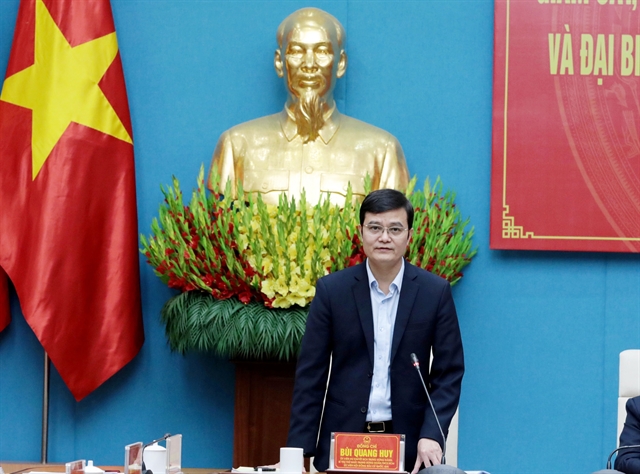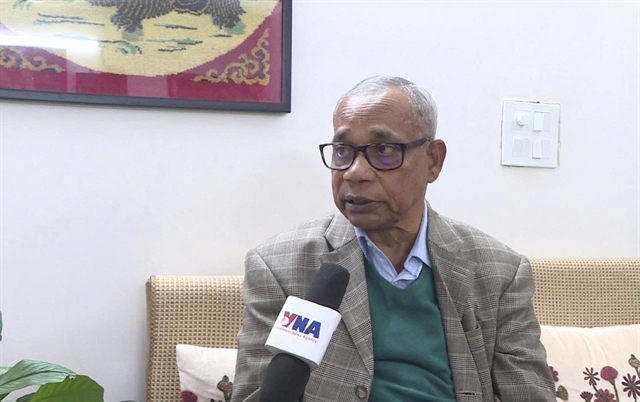 Opinion
Opinion
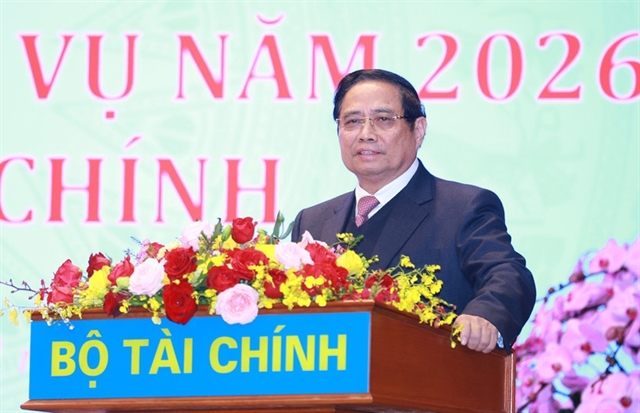
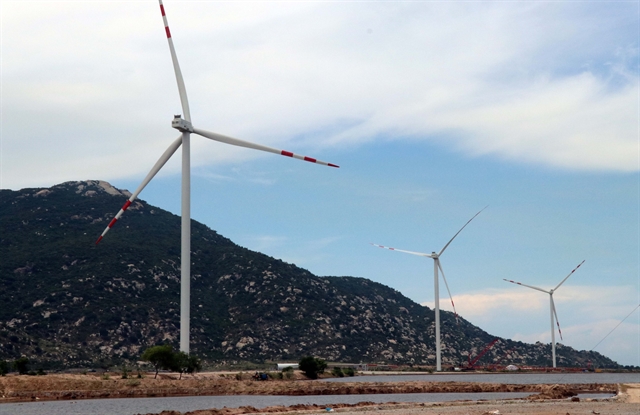 |
A windpower project in Ninh Thuận. — VNA/VNS Photo Công Thử
In the process of globalisation and economic development, Việt Nam is heavily focused on developing its infrastructure, improving livelihoods, and competing for investor attention.
Outside of the urban projects that people see and read on the news every day, there exists project that profoundly impact not only Vietnamese livelihoods but also Southeast Asia.
Lavan Thiru, Executive Director of Infrastructure Asia, a Singaporean government office set up in 2018 to channel funding to good infrastructure projects on the continent, talked to Việt Nam News reporter Anh Đức about the current situation of infrastructure projects in Việt Nam.
As an expert in the infrastructure sector, what projects you are currently working on, especially in Việt Nam?
The projects we work on in Việt Nam and most other parts of ASEAN tend to be around very similar themes, largely because I think most of us are trying to deal with the same issues.
I think I'll put it in three buckets: the first bucket, especially coming out of this pandemic season, is environment and public health. And when we think about environmental and public health, there are a couple of sub-topics: water, wastewater treatment and waste management. These three are key infrastructure aspects that we need to put in place to ensure the health of our citizens. And it's not unique to Việt Nam but also in countries like the Philippines and Indonesia.
The second area we're focused on is the tremendous economic growth that we're seeing: logistics and supply chain network. In my opinion, the past events have shown a dislocation in the market, and with everybody trying to strengthen their own logistics and supply chain network, it means a lot more investment by countries in logistics and supply chains.
The third area we're focused on is the area where everyone is looking at energy. When we think about energy, we also consider it in three separate buckets: the first bucket is the move towards renewable energy. And the reasons why we're moving towards renewable energy, I think, are well documented, largely because of, you know, environmental concerns. Many ASEAN governments have made bold projections for moving towards a net-zero. The second bucket is to secure energy needs for our citizens over the next 20 years. We think there might be a role for certain transition mechanisms, transition fields, for example, Liquefied natural gas (LNG).
The third area that we're focused on is energy efficiency, something that people don't talk about a lot. But if you read some reports, the greatest energy source is the energy you see. So by putting in place energy efficiency solutions, we will help to moderate our demand while waiting for renewable energy supply to catch up. For us that is quite interesting.
 |
Lavan Thiru, Executive Director of Infrastructure Asia. — Photo Infrastructure Asia
What projects in Việt Nam will you be working on in the next few months?
As of now, there are some ideas that we're working on, for example, we have a Singapore company that is working on the logistics complex here, YCH Group. They're working with a local partner to develop a logistics complex in Việt Nam that's part of a much broader plan. For us specifically, we are working on a couple of ideas along the broad team I mentioned to you regarding the three areas of our interest.
So in terms of energy efficiency, it's not something that is front and centre in the minds of everybody. But we think that we can work with the public and private sector in terms of putting in place some solutions from Singapore in terms of energy efficiency, especially given that Việt Nam is such a large manufacturing centre, and with energy efficiency, we are going to help to make the product a lot more cost-competitive.
Also, we are looking at working with partners to bring solutions in the water sector, specifically on non-revenue water, a big problem in many Southeast Asian markets. In Việt Nam, the non-revenue water loss could be as high as 30 per cent in some areas, and we think we can bring solutions to this space.
And of course, the final one, where we have very strong capabilities, is waste management, especially waste to energy conversion and recycling. For the companies that are in this field, they can see the value of having proper risk management in place.
What are your opinions on the main infrastructure-related challenges that Việt Nam is facing?
I think the challenges are consistent across Southeast Asia, and there are probably three challenges. The first challenge, something I covered earlier, is the availability of financing. This has two parts to it. The first part is that actually, the Government plays a very, very big role in financing. In some markets, the government finances up to 90 per cent of all infrastructure.
But if you look at how much we want to grow, it's evident that the Government cannot do this alone. The private sector needs to step up and play a larger role, thus leading to this huge requirement for the private sector to fund infrastructure. It's not a challenge, per se, but more of a question: how do we mobilise the private sector in a way that is channelled towards infrastructure?
The second challenge is that we feel that, with sustainability becoming a huge topic in the future, infrastructure will be a little bit harder to do. It used to be very simple if you had to build, for example, a water treatment plant. You find your water source, make the pipes, and that was fine. Going forward, now you will need to think about as we drain water from that source, what kind of damage are we doing to the environment? Are we losing water? So you know, there are many more challenges going forward regarding how we think about it. So we need to make sure that we can deal with these issues.
And this is where an organisation like us, Infrastructure Asia, plays our role because we conduct many capacity-building programs. One of the programs we do is about growing infrastructure costs where. Việt Nam government officials have been able to enter this programme, but it's open to all Southeast Asia.
The third area is the structuring of projects. The ability to structure projects in a way that is attractive to the private sector will then be able to help you in your first part of the financing, to bring financing in a way that makes sense and mobilises investors.
Having been working with many countries in Southeast Asia and around the world, what do you think is the best practice you have seen working with these countries and how these practices could be applied to Việt Nam?
We are happy that actually, Việt Nam has started to take very good concrete steps. For example, this year, Việt Nam has come up with the Public-Private Partnership (PPP) framework. We think this is important because this is the framework that brings in the private sector to help governments build infrastructure.
The other thing we're seeing is that the private sector wants to work much more upstream in a project. So in the past, what you will have is you will have a government official, you'll have a department that says I need to do this, and then they will come up with a tender documents, and they place it out to the market, and then everyone bids for the project.
Coming back to my earlier point about sustainability, the Government may not have the capability to be able to take into account all these considerations. Second, the private sector wants to have a role to play in ensuring that private sector needs are taken care of in the development of the project.
Private sector actors want to ensure that when this project comes to market, the ESG considerations have been taken to a level where they can participate. We find that the private sector wants to be involved in many regional projects, especially when we talk to each of those specific markets.
We think good partnership is going to be a strong enabler as well. And a good partnership comes from a strong PPP framework, a strong partnership framework, and then of course, the third area that we think will be important is a strong legislative framework.
In our legislative framework, we are looking at issues such as dispute resolution mechanisms in place. That's an important area for infrastructure projects, right? We don't want to wait for a project to go into a dispute and then take it to court process while it's there. Sometimes it's time-consuming and lengthy.
What we are looking at is at various stages to bring in place mediation for arbitration. To have some of these frameworks in place, in a project, in terms of enabling legislation, would then help to give investors a lot more confidence. And if we have these three frameworks in place, we think these will be essential or critical elements for infrastructure to take. — VNS

